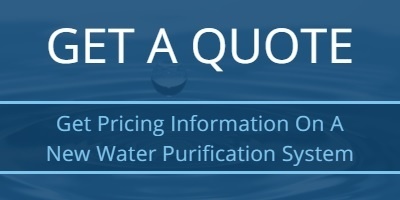Many industries are realising the benefits of reverse osmosis (RO) water purification systems. However, the main question about them is how much they cost. The fact is that the cost of an RO system will depend on how much treated water is required, and so will vary widely. Generally speaking, industrial reverse osmosis systems can range in price from £11,000 to £29,000.
Although the prices for RO systems differ, the cost benefits for industries that use them are the same.
Cost to Operate
Some methods of water filtration and purification require the use of chemicals for their systems. The price of the caustic chemicals and acids used in these conventional systems continue to rise. Meanwhile, the membranes in reverse osmosis systems, as well as the units themselves, continue to decrease in relative cost.
RO systems are powered by electricity. However, because they consume so little energy, their operating costs tend to be quite low, even for very large systems. In terms of facility downtime due to maintenance, the reverse osmosis system once again comes out on top. The quarterly or semi-annual maintenance requirements of RO systems incur far less downtime when compared with other water filtration and purification systems.
Another area of savings is the lower cost of human resources. Industrial reverse osmosis systems are highly automated by nature and as such, require very little in the way of intervention from operators. Finally, many of today’s advanced systems can be monitored and controlled remotely.
How and Where RO Water can be Used
- The water permeate produced by an RO system can be used at the pre-treatment stage in cooling towers, and can also be used as pre-treatment in facilities where higher-purity systems exist.
- RO filtration is used for the purpose of reducing the amount of solids in water prior to feeding those boilers used in power generation and similar applications.
- RO system water can be used in facilities where humidification and steam production is required. If a high enough volume of recycled water exists, it can also play an important role in power generation for facilities.
- This level of water purification makes it ideal for use in the pharmaceutical industry, as well as in the food and beverage industry, where it is used both for beverage production and the processing of food products.
- The semi-conductor industry uses water filtered by reverse osmosis to produce its products, and in metal finishing, this water is used for several operations including the electroplating of copper, zinc and nickel.
Benefits of RO System Implementation
Facilities that choose to implement a reverse osmosis system will see a substantial decrease in their operating costs as compared to other popular types of purification. The overall energy efficiency of a facility can be increased when this type of system is implemented. For example, when water from an RO system is injected into a gas turbine, energy output and efficiency can increase by more than ten percent.
Increasing the Cost-Effectiveness of RO Systems
Regardless of the size of system chosen, the answer to, “How much does a reverse osmosis system cost?” will ultimately depend on the level and quality of maintenance the system receives.
Although reverse osmosis systems require far less maintenance than other water purification units do, effective management is the key to a long system life. To do this, facilities using these systems must adopt a consistent approach as far as PM (preventative maintenance) and system operation is concerned.
For instance, the condition of the membranes used in the RO system is critical to its performance. Should a membrane become compromised due to the accumulation of some form of contamination, it will experience a drastic loss in performance. However, with proper measures in place to ensure minimal build-up, as well as ensuring the unit is cleaned between these instances, long-term system reliability can be assured.
Knowing when to maintain the unit is another way to increase its cost-effectiveness. For instance, certain process factors such as typical flow rates and average concentration of contaminants needing to be filtered can help operators determine the best intervals at which to carry out the cleaning and disinfection of the unit.
Get Free Help with choosing the right Filtration Option for your Facility
By and large, the cost benefits of an RO system to a facility can far outweigh the financial outlay. However, cost is only one factor when deciding which system is best for your facility.
If you need more information with regard to the options available to your facility for water treatment, our free eBook can help. “The Complete Guide to Industrial Purified Water Systems” is packed with valuable information about how on-site water purification can increase your facility’s efficiency. Should you have questions, we encourage you to get in touch at any time with our team here at Wychwood. You can call us on 01993 892211, or send an email to sales@wychwood-water.com.










 We are a specialist independent company involved in water purification and water treatment technologies
We are a specialist independent company involved in water purification and water treatment technologies


